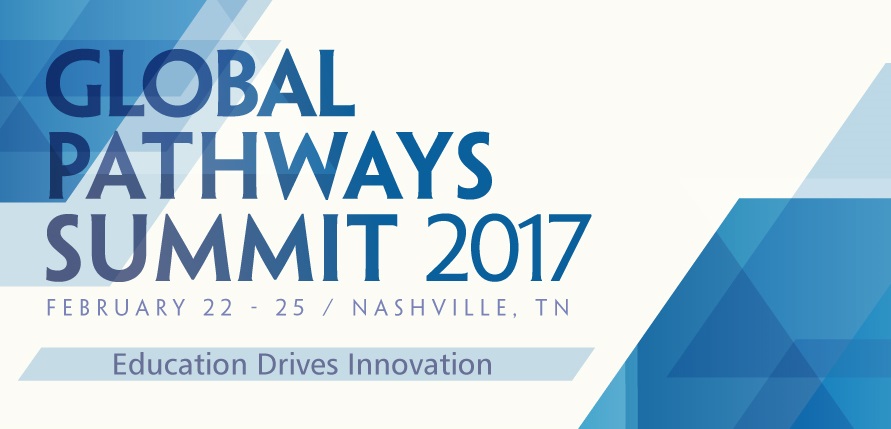CONCURRENT SESSIONS IV 1:30 Friday
The Multicultural Lens: Agility and Compatibility
Location Inman 404
Presenters
Ann Gillespie, Tennessee Latin American Chamber of Commerce
Marcela Gomez, President, Tennessee Latin American Chamber of Commerce
Summary This session provides a framework for discussion of how the “unwritten rules” of culture impact students’ experience in study abroad. The Multicultural Lens tool helps identify and predict gaps in cultural compatibility so that individuals or institutions can navigate situations and communicate effectively.
List Learning Objectives
- Introduce the 7 aspects of the Multicultural Lens Framework
2. Identify cultural set points of individuals and institutions
3. Evaluate potential cultural gaps for students in study abroad
4. Case studies and scenarios for discussion
The Bridging Project: Using Place-Based Learning, Community Connections, and Augmented Reality to Promote Matriculation in Post-Secondary Language Studies
Location Inman 405
Presenters
Stephanie Knight, Center for Applied Second Language Studies, University of Oregon
Marilyn Mi, Portland Public Schools
Summary Even though heritage and immersion language learners should be populating university language flagship programs, many of these learners stop studying the target language after the state requirements at the secondary level are fulfilled. To address this trend, the Center for Applied Second Language Studies at the University of Oregon has collaborated with Portland Public Schools to conceive the Bridging Project. This project aims to promote the matriculation of Spanish, Chinese, and Russian heritage and immersion language learners in university flagship language programs through the creation and execution of a hybrid language course for that involves place-based learning supported by the implementation of augmented reality tools. The discussions in our presentation regarding our collaboration with PPS and community partners, the course, the technological tools that it embeds, and place-based learning will serve our overarching goal-that educators in attendance will be supported in their efforts to foster vertical articulation efforts that involve secondary schools and community centers and embed digital and place-based learning tools featured in the course in a variety of educational contexts involving advanced language learners.
Learning Objectives
- Participants will be able to identify the challenges that exist for serving advanced language learners at the secondary level and promoting matriculation into post-secondary language programs.
- Participants will be able to demonstrate understanding of the pedagogical foundation for place-based learning and the integration of augmented reality tools in the language classroom.
- Participants will be able to discuss the advantages and challenges inherent to computer-mediated language learning.
- Participants will be able to prove practical understanding of how to use digital tools and place-based learning in the classroom.
- Participants will be able to identify approaches to cultivating meaningful partnerships with community partners and secondary institutions.
Universidad de los Niños: A K-16 Model in Colombia
Location Inman 406
Presenters
Ana Maria Londoño, Jefe Universidad de Los Niños, EAFIT University
Marcela Wolff Lopez, Director of International Relations, EAFIT University
Summary
Tertiary Education as the K-16 model is known in Colombia, is a relatively new concept, and integrating scientific education has been a challenge for Colombia. In 2005 EAFIT began its innovative program ¨La Universidad de los Niños¨ a program that invites children and youth to become engaged in scientific exploration and research by posing simple questions, conversations and games to children and youth. This program has been very successful and is one of the first in Colombia to include children and youth in research activities, thus motivating them for college. Furthermore, in 2017, this program will be offering its first international project working alongside with Tennessee State University, Centro Colombo Americano and From the Heart Foundation in Nashville, TN.
Learning Objectives
1. Learn about K-16 education in Colombia
2. Learn about a pedagogical model of research for children and youth in Colombia
3. Learn how different organizations can work together and connect schools, higher education institutions and the community.
4. Learn about international collaborations to increase academic mobility for K-16.
Experience at CES University on Education Models for Innovation
Location Inman 407
Presenters
Rubén Dario Manrique, Director, Research and Innovation, CES University
Jorge Julian Osorio
Juan Jaime Arroyave
Summary In Colombia, higher education faces several challenges, which include maintaining high academic standards for students and faculty, excellent competitive levels of professional graduates who join the workforce, adapting to the constant changing socio-economic conditions of students and of the economic models that influence them, to provide attractive professional training programs, to create knowledge, and to innovate in order to for them to be economically sustainable; All of this, within a framework that promotes ethical standards and behaviors for professional exercise, allowing individuals to have a social purpose and understanding of their role in Society.
List Learning Objectives
1. Present a model of innovation within the teaching processes in higher education
- Illustrate some examples of successful projects as results of the CES University (Universidad CES) innovation model
